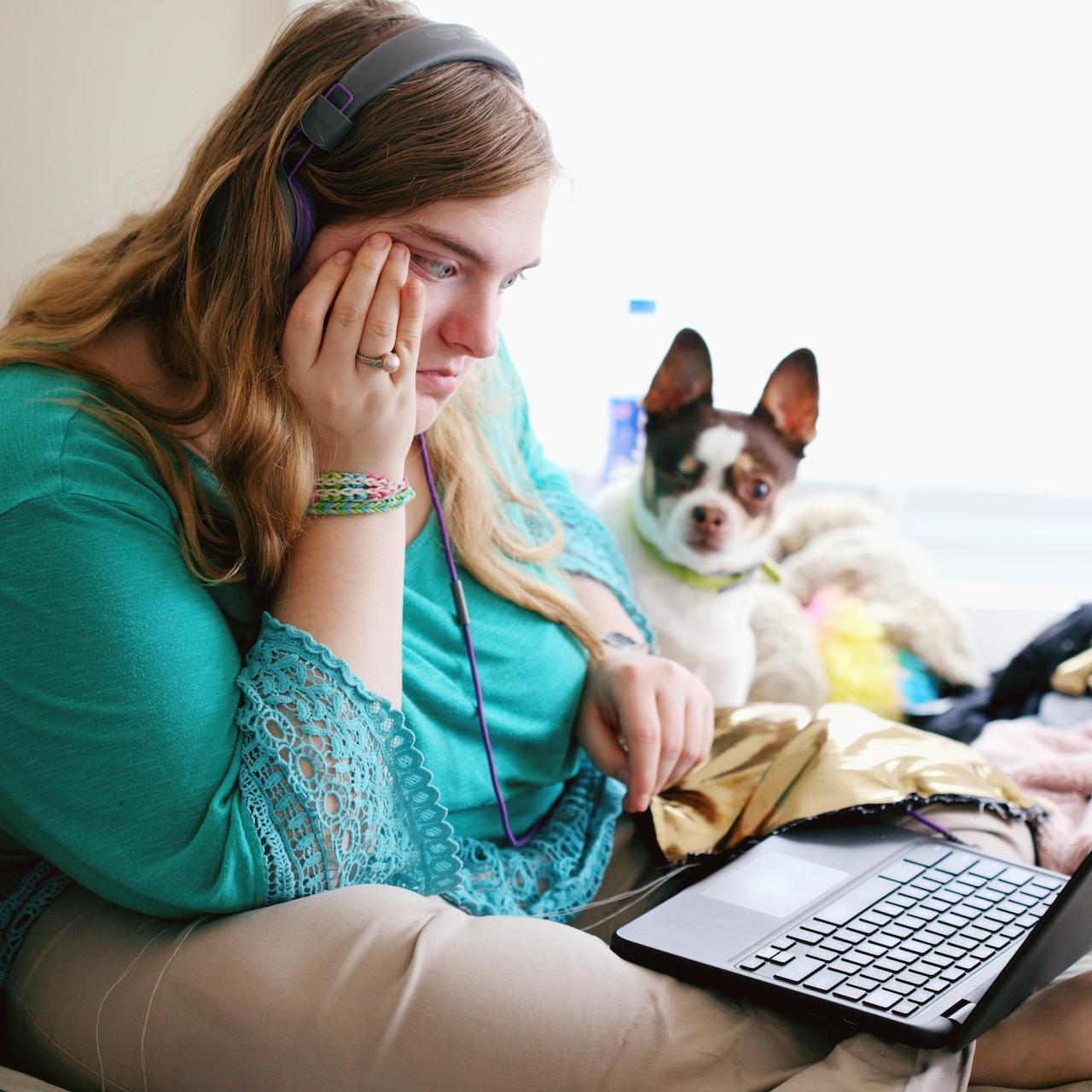Welcome, White House, to the Global Water Security Effort


Let’s face the facts. Global water issues are a national security priority.
Too much water causes flooding, destruction and waves of refugees. Not enough water causes drought, famine and even more refugees. Water contamination and lack of proper sanitation cause sickness and death on a massive scale around the globe.
Access to water and sanitation are recognized by the United Nations as human rights, yet more than 2 billion people live in countries experiencing high water stress. More than half of the global population could face water shortages by 2050, while 1.6 billion could be at risk from floods, according to the U.N.
No less an authority than the U.S. military believes these issues will cause not just misery but increasing political instability and even war worldwide. Just look at Russia and Ukraine, where access to water in Crimea is a major factor in the ongoing conflict. As political commentator Thomas Friedman has noted, the drought in Syria nearly two decades ago was an important element in the rise of the Islamic State. All this contributes to the worldwide refugee crisis, further increasing instability.
Water problems, exacerbated by climate change, threaten security at home as well. Rising sea levels, water scarcity and extreme rainfall increase inequality, weaken infrastructure and consume valuable resources. We already observe the effects of historic droughts in the West, potentially damaging agriculture, industry, real estate and economic growth in addition to health and wellbeing. Soon, we could see “climate refugees” within our own nation looking for a climate haven with plenty of freshwater, such as the Great Lakes region.
That’s why it’s encouraging to see the U.S. Agency for International Development (USAID) and the U.S. State Department release the 2022-2027 U.S. Global Water Strategy. This follows Vice President Kamala Harris unveiling the first-ever White House Action Plan on Global Water Security earlier this year.
The strategy aims to meet four objectives: strengthen sector governance, financing, institutions and markets; increase equitable access to safe, sustainable and climate-resilient water and sanitation services, and the adoption of key hygiene behaviors; improve climate-resilient conservation and management of freshwater resources and associated ecosystems; and, anticipate and reduce conflict and fragility related to water.
But words on paper are just that, and these challenges require urgent action.
Here’s one example of what action looks like. The U.S. Army has created an innovative program, modeled after the successful “Monuments Men” concept from World War II, enlisting water industry professionals to serve in the Army Reserve, using their expertise to bolster the military’s ability to solve water problems in the U.S. and abroad. These specialists will serve in a public water and sanitation specialty unit to advise and assist on worldwide water crises, helping people avoid misery and conflict to live healthier, more stable lives.
Critical to the global water security effort is support for water technology innovation in the private sector. This offers opportunity not only for the U.S. to dominate the global marketplace for water resiliency solutions but also a potential economic boon in industrial towns clustered around the Great Lakes.
For example, Milwaukee has parlayed its history of water-related industry into its current position as “an undisputed global water hub,” according to the Brookings Institution. The hub encompasses industry giants such as A. O. Smith Corporation and Badger Meter to exciting startups such as Rapid Radicals Technology, whose technology reduces the time needed for wastewater treatment from eight hours to 30 minutes. The White House and Congress should direct economic development resources to encourage this type of innovation.
Finally, the government needs to leverage its legislative capabilities, power of the purse and bully pulpit to promote corporate water stewardship at home and abroad. All businesses use water, so all face some risk of job loss, economic breakdown and, in some cases, security issues triggered by water problems.
Worldwide, only 11 percent of freshwater is used by households, while the rest goes to agriculture, industry and thermoelectric power. We already are watching tensions grow on the West Coast among businesses, farms and communities as they debate who should receive rapidly dwindling stores of usable water.
Businesses of all types need to adopt practices that use less water and treat and replenish the water they use. They also need to cooperate with all stakeholders in a given watershed, including those that cross international boundaries, to promote the long-term health of the water source. Just as with carbon emissions, developing nations will no doubt need assistance from wealthier nations to steward freshwater resources.
Bottom line: We need all hands on deck to solve water scarcity, flooding, contamination and other thorny water problems. The White House says the U.S. government needs to work in partnership with the private sector and nongovernmental organizations to advance progress toward global water security goals, and we wholeheartedly agree. Now is the time for bold action to ensure the U.S. is a leader in water security and climate resiliency.
Interested in having your voice heard on 3p? Contact us at [email protected] and pitch your idea for a guest article to us.
Image credit: Justin Wilkens via Unsplash
Make it Make Sense: Manufacturing a Recession When ‘No One Wants to Work Anymore’


A survey of more than 1,300 U.S.-based CEOs by the professional services network KPMG revealed that an overwhelming majority of corporate leaders expect the economy to slide into a recession over the next year — and they’re planning to preemptively lay off employees and make cuts to environmental, social and governance (ESG) programs in response. Of course, none of this should come as a surprise considering that the Federal Reserve’s recent rate hike was inspired by its insistence that curbing “red-hot demand” — and not corporate greed — is the key to cooling record-high inflation.
And, while the Fed appears fine with unemployment reaching 4.4 percent in the process, its manufactured recession completely ignores the fact that continued increases in consumer spending likely have more to do with the artificially inflated cost of basic goods than excessive demand. If anything, the move is a corporate giveaway — allowing CEOs to take back the measly increases they were forced to accede in order to attract workers during the 2021 rebound all the while keeping their skyrocketing profits.
The disconnect between narratives is palatable at this point. Over the summer, economist and former U.S. Treasury Secretary Larry Summers called for painful levels of joblessness. At the same time, employers and conservative pundits alike continue to spout off about how “no one wants to work anymore.” But how can Americans be refusing to work at the same time that the economy needs fewer of them to take home a paycheck? How can both of these contradictions be true at once?
Simply put, they can’t be. Of course, lamentations about lack of work ethic are really just code for employers who don’t want to pay a competitive wage. After all, the COVID-19 pandemic sparked an actual labor shortage, leaving many without enough staff. A mere 6 million workers were available to fill 10 million vacancies in August of this year. Through this lens, layoffs and hiring freezes make sense: If there are fewer jobs available, it is easier to put workers back in their place, giving employers back the upper hand. Naturally many CEOs appear to be all-in on such a plan, with 51 percent already aiming to cut labor (additionally, 59 percent are gunning for ESG). As Business Insider reported, executives have essentially made it clear that 2023 is going to be pretty awful.
But will sacrificing working families to a recession really bring inflation down? It’s unlikely considering the source of rising prices. Wage gains made by in demand workers have already been eaten up by what the AFL-CIO union federation coined “Greedflation,” leading to an overall 2.4 percent drop in real wages. According to the Economic Policy Institute, less than 8 percent of recent inflation is due to rising labor costs. For reference, that is a miniscule amount compared to the historical rate of 61.8 percent. Rather, the biggest recent driver has been runaway corporate profits at 53.9 percent. To put just how explosive these increases have been into context, normally corporate profits are responsible for just 11.4 percent of inflation.
At least one expert is warning corporate leaders not to proceed as planned. KPMG’s CEO Paul Knopp is concerned that employers who lay off too heavily now will be in a bad position to rehire when the economy ticks back up again — especially considering that 92 percent of the CEOs surveyed also expect an overall increase in their total labor force within three years. Of course, the fact that his concern lies with the possibility of workers regaining similar bargaining power to what they found in 2021 only reiterates the point of the Fed’s manufactured recession — to lower real wages even further while entrenching sky-high corporate profits.
Image credits: Nicola Barts via Pexels
The Pursuit of ‘Greener’ and Cheaper Plant-Based Proteins


Both Starbucks and Taco Bell recently announced an expansion of meatless meat options on their menus. Vegan chicken and meatless carne asada will be coming to select stores. Partners Beyond Meat and Daring have made these vegan alternatives possible.
More than avocado toast or tofurky, plant-based proteins aim to make vegetarianism and veganism more appealing to a broader population. It’s almost as though they’re telling meat-lovers who want to do better for the climate, "You can leave your meat and have it too!"
It’s a well-rehearsed fact that conventional cattle ranching is resource intensive. It takes the cake as the highest agricultural emitter of greenhouse gases. Worldwide, cattle are responsible for about 60 percent of agricultural emissions, according to the Food and Agricultural Organization of the United Nations (FAO). In an era of climate change mitigation, resource use has become a high priority in consumer decision-making.
Plant-based proteins are a growing market
In a 2021 Deloitte survey, 23 percent of consumers across six countries said they would switch loyalty to a brand that shares their values on environmental issues, and 42 percent had already changed their consumption habits because of their stance on the environment. Another comprehensive study from 2021 found that 85 percent of global consumers have been making more environmentally-friendly purchasing decisions in recent years.
It’s no wonder plant-based proteins are a growing market. Plant-based meat is more land and water efficient than conventional meat and is associated with far fewer greenhouse emissions, according to the Good Food Institute, a nonprofit think tank that focuses on alternative proteins.
The plant-based protein market, currently valued at $12 billion, is projected to reach $17 billion by 2027. Even mycoprotein, the fungus-based protein found in brands like Quorn, is expected to grow to a $1 billion market by 2032. And price parity between meatless meats and conventional meats may be coming as soon as 2035.

Achieving price parity between animal and plant-based proteins
“The growth of the plant-based industry is amazing … but the major challenge of today’s industry is cost of production,” Gil Shalev, CEO and founder of food tech company Equinom, told TriplePundit. “If the cost of ingredients of the plant-based industry is not going to be the same or lower than the alternatives, we are wasting our time. [The industry is] not going to be sustained,” he said. The Good Food Institute placed 2019 prices of meat alternatives at about double the cost of beef and more than four times the cost of chicken.
Bringing together biochemistry know-how and a platform powered by artificial intelligence and machine learning, called Manna, Equinom is one of the companies helping to actually bring down the cost of plant-based proteins.
Part of current industry costs are the techniques that ingredient and food companies use to achieve the right consistencies, textures, flavors and colors in their products. These characteristics are often created through processing and additives, sometimes binders and sodium, Shalev said.
He places no judgement on that process, saying it's simply the fastest way the industry has determined it’s able to reach its goals. But Equinom has a different idea.
Introducing precision to cross-breeding
Equinom is bringing a novel method of ingredient manufacturing to the plant-based food industry. Equipped with a vault of 250,000 seed varieties (and Manna), the startup is able to crossbreed the right plant varieties to achieve a client’s desired result.
Shalev describes the process as designing an ingredient to do the right thing from the outset. It should come as no surprise that less processing also leads to an even lower carbon footprint for a supply chain.
Once Equinom's team and clients have a goal in mind, the Manna system combs the database for the right biochemical properties. Informing this process are hands-on tests that include making burger after burger — or hummus after hummus, as was the case with popular hummus brand Sabra and its search for the right sesame seed to turn to paste. Companies often come to Equinom hoping for a few main outcomes, Shalev said: higher quality ingredients, lower sodium, lower costs and a smaller environmental footprint.
“I’m not saying I’m a magician. I can’t solve everything,” Shalev said. But he agreed that the potential for scaling this approach to developing plant-based ingredients and proteins is nearly unlimited.
Images courtesy of Equinom
Reality Check: Circular Plastic is a Myth


While plastic production is increasing globally at alarming rates, plastic recycling is plummeting in the United States, according to a recent report from Greenpeace. The report confirms what to many of us has long been obvious: The vast majority of plastic is not accepted at U.S. recycling facilities, and plastic that is accepted is often dumped as there are not enough companies willing to purchase recycled plastic. New plastic is cheaper to produce and higher quality than recycled plastic, making it a more appealing choice for many manufacturers. Hence circular plastic is turning out to be a myth as the plastics industry is actually on track to triple production of new plastic by 2050.
Your plastic is probably not being recycled
Current estimates indicate that plastic recycling rates hover between 5 percent and 6 percent in the U.S. Recycling rates for paper, cardboard and certain metals are much higher, leading experts to acknowledge that the recycling system is not at fault for lack of plastic recycling, but rather the plastic materials themselves. Plastic is more often incinerated than recycled, and the report found that, by and large, only two types of plastic bottles and jugs are actually accepted at most municipal recycling facilities: PET (polyethylene terephthalate, or Plastic No. 1, which is typically used for beverage bottles) and HDPE (high-density polyethylene, or Plastic No. 2, which is often used for milk jugs and personal care packaging). Plastic recycling rates for PET are estimated to be 20.9 percent and 10.3 percent for HDPE. All other plastic types have a recycling rate of less than 5 percent.
While other plastic products such as yogurt tubs and produce bags may display a recycling symbol, they are not actually recyclable under the Federal Trade Commission’s (FTC) definition of the term. The FTC requires that products that are labeled as recyclable must have recycling facilities available to accept that product for over 60 percent of U.S. residents. Only PET and HDPE bottles and jugs presently meet the FTC’s definition of recyclable.
Additionally, just because a recycling facility accepts certain plastics does not mean that they are actually recycled. For example, in Knoxville, Tennessee, the city’s recycling facility accepts yogurt tubs, produce bags and other less-commonly accepted plastic products, but the items are disposed of and not recycled, due to the lack of available buyers of recycled plastic.
The problems with talk about circular plastic
Greenpeace cites several fundamental reasons that plastics are not recycled: They are extremely difficult to collect and sort, environmentally damaging to reprocess, and not economical to recycle. They also include toxic materials.
There are over a thousand varieties of plastic, but mixed plastic waste cannot be recycled together. Each type of plastic is made up of different chemical compounds with different physical properties and melting points, so even if every scrap of plastic waste was collected, the sheer quantity of plastic types makes sorting and the scaling up of circular plastic virtually impossible.
The process of recycling plastic also creates pollution. During the recycling process, plastic products shed microplastics, which are removed through washing and discharged into the environment. The Greenpeace report notes that plastic recycling processes expose workers and adjacent communities to toxic chemicals, and globally, communities of color are more likely to suffer negative health impacts from plastic manufacturing, processing, disposal and pollution.
What is the solution if circular plastic can become a reality?
The report argues that by pushing recycling as a solution to the plastic problem, large corporations have misled the public and created an environmental catastrophe. In 2021, the U.S. produced 51 million tons of plastic waste but only recycled 2.4 million tons. Lisa Ramsden, plastics campaigner at Greenpeace, specifically called out companies the NGO views as among the worst corporate offenders. “Corporations like Coca-Cola, PepsiCo, Nestle, and Unilever have worked with industry front groups to promote plastic recycling as the solution to plastic waste for decades," she said. "But the data is clear: Practically speaking, most plastic is just not recyclable. The real solution is to switch to systems of reuse and refill.”
The report calls upon companies to work together to create and adopt international standards for phasing out single-use plastic.
Image credit: Roberto Sorin via Unsplash
Allyship and Diversity Plans Aren’t Enough: Corporate America Needs to Listen to People with Disabilities


A young woman with autism and other learning disabilities using a laptop for remote learning.
Although 90 percent of U.S.-based companies claim to prioritize diversity, equity and inclusion (DEI), only 4 percent consider disability as part of those initiatives. With more than 1 billion people globally living with a disability, that’s a costly disconnect, argues Dannie Lynn Fountain, an author, DEI expert and human resources staffer at Google.
“Companies are incentivized by financial outcomes, and research shows that the more diverse a workforce is, the more innovative the ideas are, the better the financial outcomes are for the company,” Fountain told TriplePundit. “Plain and simple, it makes business sense.”
For employees, increased diversity helps generate a more positive and productive workplace. “If you only have one employee who identifies as a particular marginalized identity, there's a tremendous amount of tokenization and burden that happens for that employee,” Fountain said. “By having a good cohort of individuals who come from each marginalized background, there’s a sense of community that gets created, there’s better employee engagement and there’s likely to be higher retention.”
Fountain’s latest book, Ending Checkbox Diversity: Rewriting the Story of Performative Allyship in Corporate America, explores the absence of disability in diversity priorities and how businesses can better support people with disabilities.
“Performative allyship,” Fountain told TriplePundit, is when companies and individuals support or seek to ally themselves with marginalized identities “purely for the way it appears, purely for the performance of it.”
From Fountain’s perspective, announcing diversity programs or internal resources for people with disabilities isn’t going far enough.
“It can be a company having a disability employee resource group or having a program specifically for higher autistic individuals or something like that, but their interview processes are not inclusive and their accommodation process requires more documentation than the [Americans with Disabilities Act] actually legally requires,” she added.
Companies looking to attract people with disabilities can start by reexamining their outreach to potential job candidates, Fountain advised. “So many organizations, when they get an application in or even when they are cold sourcing for candidates, the first step is to jump on the phone with the recruiter, let's have a quick 15-minute chat,” she said. “First of all, even if you're not neurodiverse, if you're introverted, if you get nervous, if you get anxious, that phone call isn't going to be the best way to sell yourself.”
It’s better to offer different ways to engage, she said, perhaps by sharing a few questions by email that candidates can reply to, or simply asking the candidates to share a little bit about themselves. “Basically, offering anything other than the default, 15-minute phone call is a great start,” Fountain explained.
Current interview processes are biased toward candidates who can think on their feet, quickly synthesize information, and provide a well-thought-out response within 30 to 60 seconds of hearing a question, she claimed. “There’s nothing wrong with that," she said. "There certainly is something to be said for the talent of being able to synthesize data quickly and articulate a response."
However, the majority of neurodiverse candidates are not able to highlight their best selves in a setting like that. Providing those initial questions in advance helps neurodiverse candidates present themselves better. Follow-up questions will also help to determine whether a candidate got improper assistance help or cheated, Fountain noted.
Whatever the setting in which she speaks or is making a presentation, Fountain makes a point of revealing her contributing identities as a queer, plus-sized Latina with ADHD to underscore that hers is not the perspective of a straight, white, neurotypical person. “I find myself often in conversations where people are unaware of the marginalized identities I hold and they say things that, were they aware of those identities, they probably would have kept in their minds instead of speaking out loud,” she said.
She considers how and when in the conversation she reveals her identities to allow for things to be said “to actually uncover what's really going on.”
“When I speak up, there is often an assumption that I'm speaking from the perspective of an ally,” she told us. “Allyship is powerful. Allyship is phenomenal, but companies, unfortunately, often don't value an ally voice as much as they do the actual marginalized person’s voice.”
Revealing her contributing identities forces people to listen to what she’s saying more closely, because she’s just said, ‘Hey, I hold this identity, fight me,” which she told us puts more weight behind what she is saying.
Fountain recognizes that how and when someone reveals their identities is a difficult, highly personal decision that weighs how much someone knows about a company, what they think the reaction might be, and how much of someone’s invisible marginalized identity will show in the interview process or at work.
Depending upon where someone lives and the industry they work in, they may choose not to disclose invisible marginalized identities for the sake of getting a job, Fountain said. Then they have to decide, once they’ve been hired, whether to identify them.
“If, for example, it’s ADHD or autism or chronic illness, are you factoring in how your performance is going to be measured without the knowledge of how you’re actually starting four steps behind everyone,” Fountain explained. “That individual choice has economic considerations, mental health considerations, because the reality is, at the end of the day, we all need a job. We all need money to live.”
Image credit: Alexander Grey via Unsplash
The World Needs More Ambition to Keep the Paris Agreement Alive


In 2015, leaders representing almost every country in the world met in France's capital city to codify the Paris Agreement, a plan to limit global warming to 1.5 degrees Celsius above pre-industrial levels.
A critical component of the Paris Agreement are Nationally Determined Contributions (NDCs), or national plans put in place to reduce emissions on a country-by-country basis. NDCs are key to implementing the goals of the Paris Agreement, but at the time of signing in 2015, countries' commitments were not ambitious enough to reduce emissions to a level in line with a 1.5-degrees Celsius warming pathway. Instead, countries promised that their NDCs would become more ambitious over time, and the Paris Agreement allowed for revisions to NDCs to be submitted every five years.
More than seven years later, they still have a long way to go. A new report from the World Resources Institute shows that while 80 percent of countries have submitted a revised, more ambitious NDC, the plans are still not ambitious enough to meet the goals of the Paris Agreement and limit warming to 1.5 degrees Celsius.
Climate ambition must grow bigger, faster
The revised NDCs, if fulfilled, will cut emissions by a further 7 percent compared to the national commitments made in the 2015 Paris Agreement. However, in order to keep the 1.5-degrees goal alive, emissions would need to fall 43 percent by 2030, compared to a 2019 baseline.
In other words: NDCs need to be over six times more ambitious and must accelerate rapidly in order to meet the goals of the Paris Agreement. Current emissions reduction patterns still place the world on track to a catastrophic 3 degrees Celsius of warming from pre-industrial levels.
Paris Agreement mechanisms for ratcheting up the scope and scale of participating countries’ NDCs over time have improved emissions reductions goals. But current plans are not big enough or fast enough to avoid catastrophic climate pathways. For example, only 51 countries address fossil fuel-derived energy in their NDCs, and only a small portion of those plan for a reduction in emissions from fossil fuel energy.
All totaled, the most recent NDCs submitted in 2021 would reduce carbon emissions by an additional 5.5 gigatons compared to 2015 commitments, leaving a 28-gigaton gap in emissions reductions necessary to stay within the bounds of a 1.5-degrees Celsius warming scenario.
Climate finance is key to the Paris Agreement
A key factor in substantially lowering emissions is climate finance, and the WRI report estimates that climate finance needs to be three to six times greater than current levels in order to keep warming below 2 degrees Celsius.
Climate finance for developing countries is already expected to be a contentious part of the annual U.N. climate talks (COP27) next month, and WRI notes that finance for climate adaptation projects in developing countries will need to increase by five to 10 times the current amount to meet global need.
Many developing countries have made NDCs that are contingent upon receiving climate financing. Over half of all NDCs include estimates of climate finance requirements, which already amount to almost $4.3 trillion, according to the report.
The “Implementation COP” needs a better plan
Organizers of last year's COP26 climate talks called upon Paris Agreement signatories to revise and strengthen their NDCs to align with a 1.5-degrees pathway prior to November 2022 in order to create implementation strategies at COP27.
For this reason, the COP27 negotiations have been nicknamed the “Implementation COP.” However, if countries implement their NDC plans as they are currently written, the world will not be able to limit warming to 1.5 degrees Celsius. More ambitious targets and plans must be rapidly created, scaled, and implemented in order to meet the goals of the Paris Agreement and avoid the most catastrophic climate scenarios.
Image credit: L.W./Unsplash
Fast Fashion Company Plays Pretend with Sustainability, Proving its Sole Purpose is Profit


Multibillion-dollar fast fashion giant Shein is partnering with the reseller Treet to provide its customers with a dedicated thrifting platform. That the move comes as the mega clothing retailer faces mounting criticism for its environmental and labor practices — as well as even the revelation that its products could even make wearers sick — suggests that the tactic is more about saving face than sustainability. After all, a genuinely sustainable approach would require the company to not only abandon the wear-it-once culture that supports its business model, but also overhaul its entire system of production — from reportedly horrendous sweatshop conditions to the dependence on low-quality, pollution-heavy synthetic fabrics.
Shein Exchange, as the platform is called, works through the brand's app — allowing consumers in the U.S. to buy and sell pre-worn apparel without any extra fees. The platform should be available to users around the world in 2023. Adam Whinston, Shein’s global head of ESG, was quoted in Retail TouchPoints as saying, “We’re calling on our community to mobilize and keep previously owned clothing in circulation for as long as possible.” And yet a quick search of blogs and editorials, not to mention the anecdotal evidence all over Twitter, suggests that these items don’t last long enough to be recirculated.
Fast fashion competitors such as Zara have also announced their own resale, repair and donation platforms. Those attempts at moving closer toward the circular economy, however, come as critics link these companies to both the ocean microplastics crisis and ongoing human rights violations within their supply chains.
In addition to its resale platform, Shein has also signed onto the World Circular Textiles Day agreement — which aims for a fully circular textile economy by the year 2050. And while Whinston told Retail TouchPoints that Shein is involved in “igniting a cultural movement of circularity,” the retailer is simultaneously ignoring the reality of what a circular economy based on synthetic fibers looks like.
TriplePundit previously covered the deluge of fast fashion that is choking out thrift stores and the myth that any kind of circular economy within the apparel sector is a good economy. The fact is, these fabrics shed more and more microplastics into our waterways every single time they are washed. As a result, as these cheap clothes age and potentially cycle through the Shein Exchange, they will pollute at exponentially higher rates with each revolution through the circular economy. And that’s not to mention the carbon footprint involved in shipping barely used items across the country nearly every time they are worn.
When TriplePundit asked Shein for comment, a representative said: “As the topic of microfibers — which are present in all materials like cotton, wool and performance wear — continues to be an important area of research for the industry, we've joined other industry leaders in forums hosted by Textile Exchange and the AAFA to discover solutions that can help mitigate this issue effectively. Educating our consumers about how to care for their garments (wash less, wash cold, line dry) is an area we plan to build more content around to encourage our customers to reduce wear and tear over the life of their garments.”
While the point of a circular economy is to reduce pollution, waste and the unnecessary use of resources, Shein has said nothing about cutting production or changing its business model. Rather, the retailer admitted that “resale threatens to cannibalize the sale of new items.” By keeping buyers within its marketplace, Shein can continue business as usual — driving sales toward its latest inventory and continuing to encourage the mass purchase of clothes meant to be worn once for Instagram or the club under the guilt-relieving guise that they can be shipped on to a second life.
Of course, Shein’s lip service to the circular economy does nothing for its reported labor record — another source of contention between the brand and its primarily Gen Z customer base. Instead of operating its own industrial textile plants, the retailer relies on a series of small suppliers that have been found to require workdays anywhere from 12 to 18 hours long, 28 days per month, according to an investigation from Channel 4 and The i newspaper in the U.K. With a pay rate of just pennies per item, workers are reportedly required to complete a minimum of 500 garments per day and are subject to substantial fines for even a single mistake. By outsourcing its labor, Shein has distanced itself enough to hide behind plausible deniability of the abysmal labor practices and unsafe workplaces that go into producing its products. Additionally, workers and consumers alike are at risk from the excessive amount of lead that has been found in the clothing.
As for how Shein is responding to such reports about its supply chain, the aforementioned representative said: “We are extremely concerned by the claims presented by Channel 4, which would violate the Code of Conduct agreed to by every Shein supplier. Any non-compliance with this code is dealt with swiftly, and we will terminate partnerships that do not meet our standards. Shein’s Responsible Sourcing standards hold our manufacturing suppliers to a code of conduct based on International Labor Organization conventions and local laws and regulations governing labor practices and working conditions. We work with leading independent agencies like TUV, SGS, OpenView and Intertek to conduct unannounced audits at supplier facilities. We have requested specific information from Channel 4 so that we can investigate.”
If these documented labor abuses aren’t enough, rumors rage across Tik Tok regarding supposed pleas for help being found on garment care tags. While evidence is lacking, Shein’s failure to respond to statement requests from both the U.K. and Australia in regards to modern day slavery prevention has raised further questions about whether the company could be benefiting from forced or child labor.
To top it off, the fast fashion brand is quickly becoming infamous for stealing intellectual and cultural property — from sticker designs to Muslim prayer rugs, Mayan style embroidery and much more. Shein and its parent company have been sued for copyright and trademark violations no less than 50 times in U.S. courts alone. Plaintiffs include individual artists as well as major designers like Oakley and Ralph Lauren. The true number of designers affected is likely unknown, however, since many who claim to have had their designs stolen do not have the means to bring a lawsuit.
Ultimately, Shein’s inadequate attempt at a resale platform has nothing to do with doing the right thing for customers, workers or the planet. The mega retailer’s only purpose is profit — that much is more than clear.
Image credits: Adobe Stock
The U.S. ESG Movement May Need to Reboot After the Midterm Elections


A more sustainable U.S. economy is slowly taking shape, partly due to the growth of the corporate ESG (environment, social and governance) movement. However, the work is far from over. Even as the impact of climate change takes hold, standards for ESG reporting and transparency are still in flux. Partisan state policies are also creating new roadblocks. Depending on the results of the U.S. midterm elections next month, ESG advocates could find themselves battling Congress as well as state-level officials.
ESG is still working out the kinks
ESG reporting is a profit-making effort at heart. It defines action steps that support a holistic approach to corporate health, with climate change providing the essential context for economic decarbonization.
The evidence in support of ESG reporting is beginning to grow. One key test occurred when the market crashed in March 2020 after COVID-19 lockdowns began. ESG funds were outperforming the S&P 500 as of January 2020, and they also demonstrated that they were better equipped to handle the upheaval of the COVID-19 pandemic than conventional funds.
In April of 2020, Morgan Stanley noted that funds focusing on green infrastructure were in a better position to benefit from the anticipated green recovery. The firm Morningstar also weighed in with a positive outlook for ESG investing.
Editor's note: Be sure to subscribe to our Brands Taking Stands newsletter, which comes out every Wednesday.
More recently, a note of caution has emerged. In September, Bloomberg noted that “plain-vanilla” funds were doing better than ESG funds, partly due to the influence of Russia on energy stocks.
The publication Investment Week also recently noted the absence of a strong positive correlation between two ESG rating systems developed by Morningstar and the firm Refinitiv.
In addition, CNN also weighed in with a dire warning earlier this week: Based on an exclusive analysis provided by Refinitiv, CNN reporter Nicole Goodkind wrote that “the rapid pandemic-era uptick in ESG fund investing has now stopped completely” and that “ESG funds in September saw their largest outflow of investor cash since the March 2020 recession.”
Follow the money
That sounds dim enough, but Goodkind also took note of the influence of partisan politics on ESG investing in the U.S. Specifically, she described how policymakers in some states are targeting ESG firms.
“A large number of Republican-led states, 20 and counting, have said they will remove ESG-focused firms like BlackRock from managing assets in their state retirement plans. BlackRock has so far lost more than a billion dollars in commitments because of these changes, according to Robert Jenkins, head of Lipper Research at Refinitiv,” Goodkind reported.
Goodkind did a service to the profession of journalism by taking note of the partisanship that is driving opposition to ESG reporting, and singling out the Republican Party.
The fact is that “both sides” are not slinging the “woke capitalism” canard at BlackRock and other firms. Both sides are not making an effort to dissuade corporate policymakers from adopting ESG principles. Only one side has cut itself adrift from fact and evidence, not only regarding ESG reporting but across the board on a wide range of issues. The gap is especially evident in climate science, where the U.S. Department of Defense has also adopted a strong climate risk management position at odds with Republican orthodoxy.
Short-term gloomy, long-term rosy
Though Goodkind paints a gloomy picture on the ESG investor side, she also references a new KPMG poll of 1,300 CEOs, including 400 in the U.S., that sounds a more positive note.
The poll does indicate that a substantial number of CEOs have already paused their ESG programs amid fears of a looming recession. In addition, 59 percent said they plan to pause or reconsider their ESG programs in the coming months.
Still, considering the aggressive anti-ESG posture adopted by the Republican Party in the run-up to the midterm elections, it is possible that some of the KPMG respondents were hedging their bets to some degree. Business leaders who have committed to ESG reporting may be preparing to make a sharp pivot if the Republican Party wins control of the U.S. House of Representatives, the Senate or both. (The KPMG survey was conducted last July and August, after opposition to ESG emerged as a partisan political strategy linked to fossil energy interests last spring.)
In fact, KPMG reached a positive conclusion for ESG over the long run. “Companies that embed ESG into their long-term business strategies will unlock value. In fact, 70 percent of U.S. CEOs believe their ESG programs improve their financial performance,” the report reads.
Despite the possibility that control of Congress will pass into Republican hands, KPMG also made the case that ESG reporting is here to stay. “CEOs increasingly agree that ESG programs improve financial performance, which includes being able to secure talent, strengthen the employee value proposition, attract loyal customers and raise capital,” the report concludes.
On ESG reporting, accountants are counting themselves in
Another indication of the staying power of ESG comes from the Association of International Certified Professional Accountants. Last summer, the organization created the new title of “global head of environmental, social and governance” and conferred it on the Australian CPA Jeremy Osborn, who began his career with Unilever.
“Osborn’s hire represents AICPA and CIMA’s continued commitment to provide all accounting and finance professionals with the resources, tools and skills they need to support the transition to more responsible business practices, enhance the reliability of ESG-related disclosures and place long-term value creation at the heart of corporate activities and reporting,” AICPA wrote in a press release dated July 12.
With AICPA taking a hands-on approach, the prospects for standardizing ESG reporting have improved. That should help push back against partisan interference, while also satisfying environmental advocates who are concerned about greenwashing in ESG reporting.
“Working for the world’s largest and most influential accounting organization is a great opportunity for me to help move the needle on ESG management, measurement and reporting, which provide sustainable foundations for long-term value creation by organizations,” Osborn emphasized.
As for the Republican Party, its leadership has given up trying to reconcile its anti-business stance on ESG principles with the party’s longstanding claim to represent the interests of business owners and investors.
Perhaps they have concluded that their voters simply don’t care about the contradiction. Perhaps they are right.
One way or the other, the picture will come into focus once Election Day 2022 has come and gone.
Image credit: Jonathan Simcoe and Amy Shamblen via Unsplash
‘The Great Breakup’ — Companies Won’t Budge, So Women Leaders Are Moving On


Employees proved during the pandemic that they are more than capable of stepping up, and they are seeking to be rewarded — and trusted — in kind. But many companies’ leadership still view the workplace through a 20th-century lens. The result is that many current and would-be women leaders are moving on from their organizations.
It's a pipeline of talent that’s broken at both ends. According to a joint LeanIn.Org and McKinsey study, on one end is the “broken rung” problem. For the eighth year in a row, women are being held back in corporate America: For every 100 men who are promoted from an entry level to manager, only 87 women score a promotion, and that number declines to 82 for women of color. Meanwhile, more women leaders are leaving companies; for every woman at the director level who gets promoted, two women directors are leaving their companies. Add what’s happening with junior and the more senior women leaders, and it’s clear women face daunting odds when it comes to achieving equality and equity in the workplace.
What some are now calling the “great breakup” is a vicious cycle, or should we say what’s happening is more linear as it’s gone from a cycle to, now, a mass exit. As women leaders watch their peers head for the doors, they do the same. To say the pipeline of talent is broken is an understatement: At this rate, it’s beyond repair. The pipe has busted.
Editor's note: Be sure to subscribe to our Brands Taking Stands newsletter, which comes out every Wednesday.
So, what’s going on? At the highest level, it’s easy for a male CEO to proclaim a grandiose return to the office when he doesn’t face the same pressures as many women executives, many of whom are forced to make an impossible balancing act.
It’s not just the life-work balance that we’ve long been hearing about: It’s time to reframe what women face as the life-work-extra work balance. Bottom line: Women leaders believe they are under-recognized while being overworked. Why? The LeanIn-McKinsey study found that women leaders are tasked with initiatives such as supporting employees’ well-being and ensuring DEI (diversity, equity and inclusion) at a clip higher than their male peers, but aren’t compensated for it. And perhaps even more infuriating, 40 percent of women said such work isn’t acknowledged within their performance reviews.
In the end, it’s hard to ask for a raise when a good amount of one's work isn’t recognized in the first place.
When researchers asked women why they are leaving their employers, the three largest factors were: facing headwinds, such as constant microaggressions at the office; often being mistaken for someone more junior, at a rate twice that of men; and 37 percent said they experienced a coworker receiving credit for their ideas, compared to only 27 percent of men.
Combine the limitations of advancing their careers with the ongoing demands at work and home, and it’s hardly a wonder why women are leaving, and the data backs them up. As one women executive responded to the study: “For the first time in my career, we’re seeing people leaving and going to companies with a more generous work from home policy. So I dug into the data, and I realized something about every single person leaving. They were all women.”
Image credit: Yan Krukov via Pexels
Buying Halloween Chocolate Too Often Legitimizes Human Rights Abuses on Cocoa Farms


With people scrambling for last-minute costume ideas and yards scattered with leaves in shades of red, yellow or auburn, the smell of Halloween is in the air. That means homeowners are on the hunt for fun-sized Halloween chocolate to hand out as the flocks of trick-or-treaters descend on their doorsteps.
Each year, about 90 million pounds of Halloween chocolate are purchased and eaten during that surrounding week. Chocolate may be happiness that you can eat, but that really only holds true for the one with the finished product in their hands. Row all the way up the supply chain, and you may find that happiness is only but a dream.
What makes Halloween chocolate not so sweet?
You probably don’t want to hear it, but excluding meat products, chocolate is the food that carries the second highest greenhouse gas (GHG) emissions behind cheese. Less than ideal, but that isn’t the biggest issue in chocolate production.
More alarming yet are the working conditions of the cocoa (or cacao) farmers, many of whom are only children. Most cocoa farmers earn less than $1 per day, and those are the ones that receive a paycheck. Many children get caught up in the cocoa ring in search of work to help support their families, while some are abducted and forced into it.
The majority of the world’s cocoa is grown in West Africa, primarily Ghana and the Ivory Coast. Approximately 2.1 million children are working on cocoa farms between the two countries. In some reported cases, children are used as slaves.
Cocoa is also grown in Latin America. Some reports of worker abuse have surfaced from Brazil, but for the most part the reports of dire working conditions on cocoa farms are concentrated in West Africa.
What can businesses do to clean up their cocoa supply chains?
Tracing the source of cocoa all the way up the supply chain to the farms of origin is tedious work, and identifying the exact farms can be near impossible, especially if you are a large producer like Hershey’s, Mars or Nestlé buying gargantuan quantities of cocoa.
What is possible, however, is identifying where that the cocoa was harvested. Using this information, businesses can be reasonably certain whether or not there are human rights abuses and child labor involved in the supply of their cocoa.
Companies that offer ingredient sourcing and supply chain software like HowGood, a database for food and personal care products, are able to trace ingredients back to their places of origin — providing businesses with a look inside their supply chains and highlighting potential problem areas.
“Things that are happening at the ingredient level on the farm are the most critical when you’re trying to adjust your sourcing practices,” says Leah Wolfe, head of regenerative education and content at HowGood. “Most of a food product’s impact happens at the farm level — anywhere from 70 to 90 percent of the sustainability impact of a given product.”
Regarding the labor conditions on cocoa farms in West Africa, companies should look to source their cocoa from another region if they're buying in large quantities and cannot verify the suppliers. “One of the quickest ways that you can as a company lessen your labor risk is to change the location of where you’re sourcing,” Wolfe says.
With proposed legislation incoming from the Securities and Exchange Commission in the United States and from other governing bodies worldwide, there has never been more impetus for companies to take a deep look into the environmental, social, and governance (ESG) factors of their supply chains.
Image credit: Nika Benedictova via Unsplash